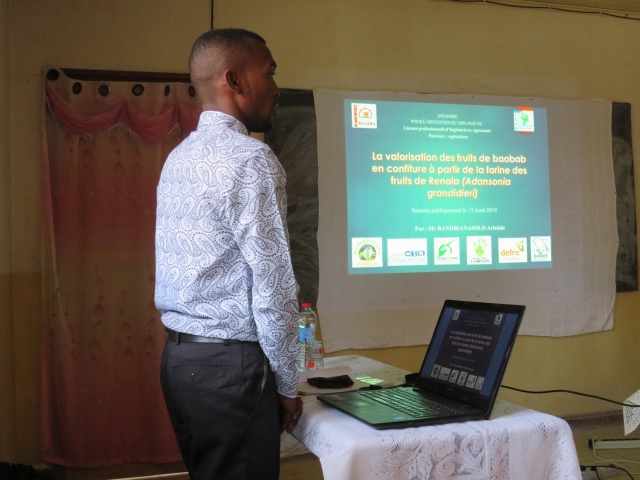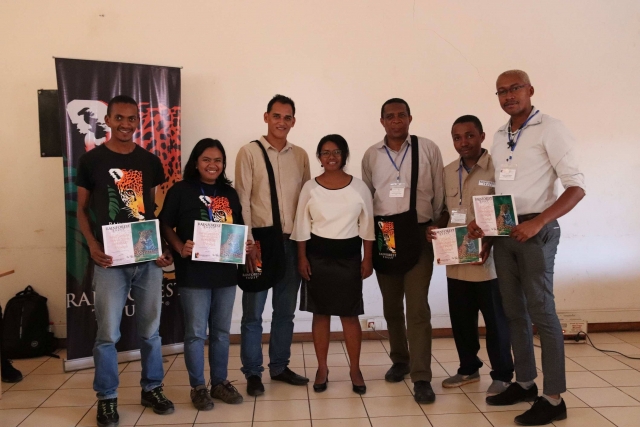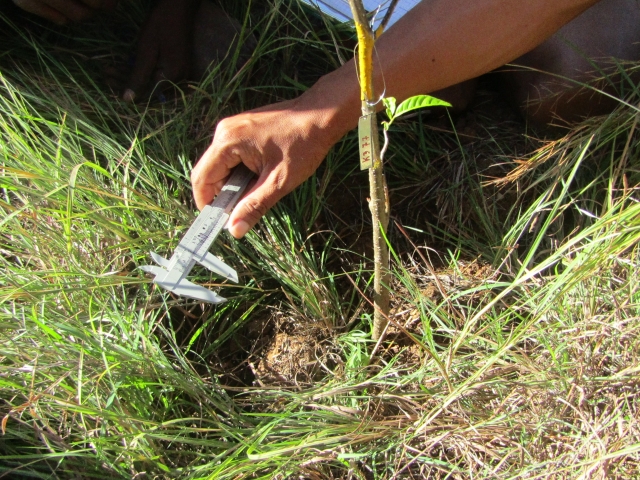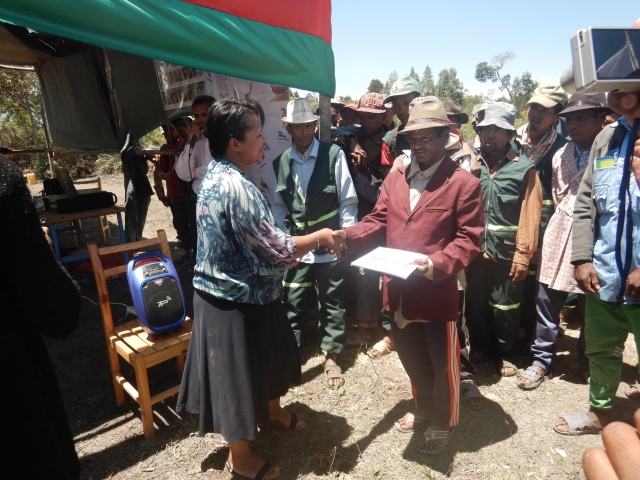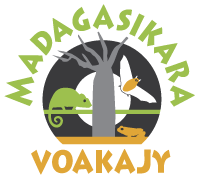RANDRIANASOLO ARISTIDE NOUS PARTAGE SON EXPÉRIENCE AU COURS DE SON MÉMOIRE
RANDRIANASOLO Aristide (This email address is being protected from spambots. You need JavaScript enabled to view it.) est l’un des étudiants en Licence de l’Institut de l’Enseignement Supérieur du Menabe (IESM) Morondava, qui grâce au financement de Darwin Initiative et en collaboration avec Madagasikara Voakajy, a pu terminer son mémoire de Licence. Le thème de son mémoire est : La valorisation des fruits de baobab en confiture à partir de la farine des fruits de Renala "Adansonia grandidieri".
Il nous partage son expérience au cours de la réalisation de son mémoire.
